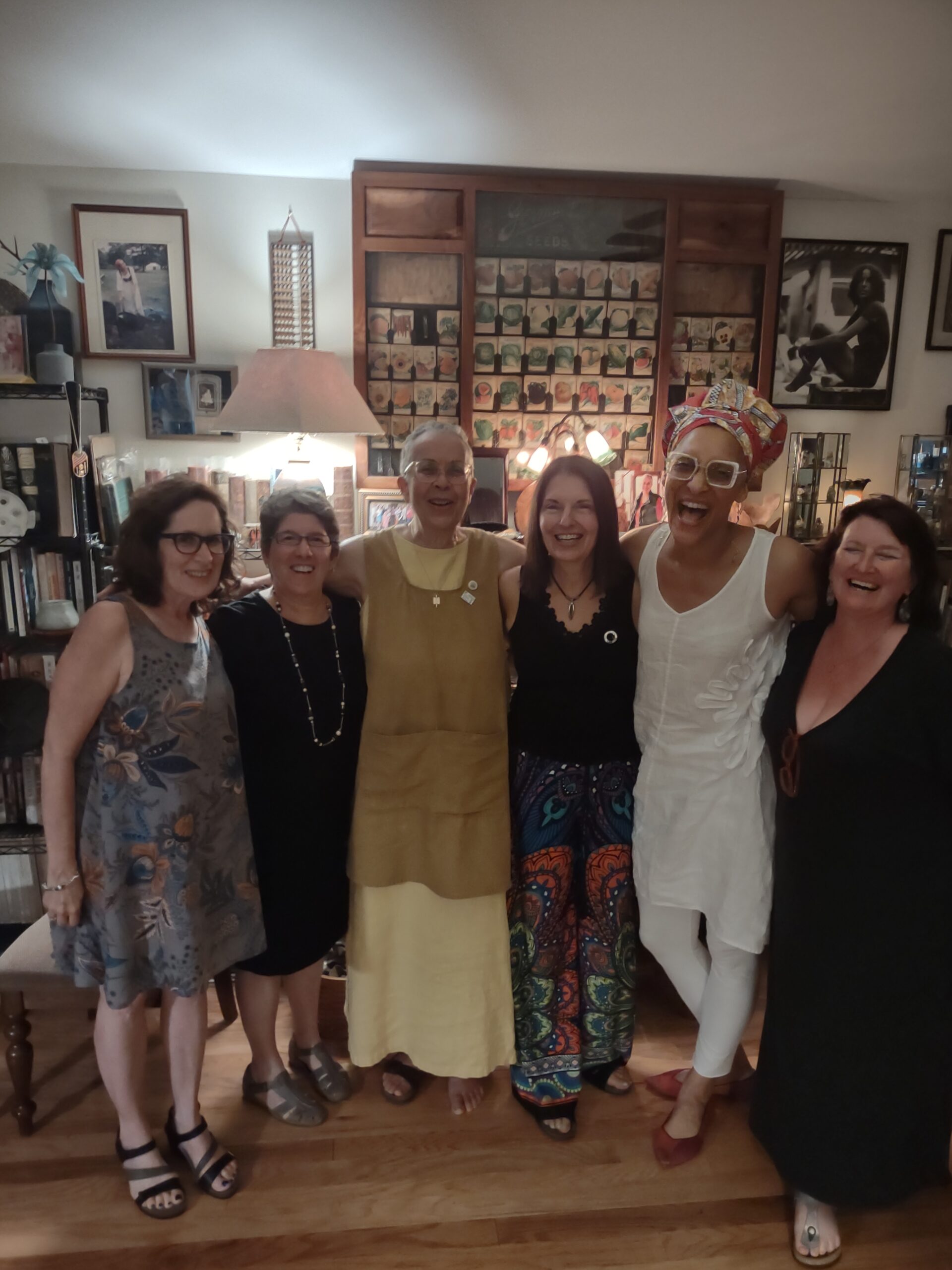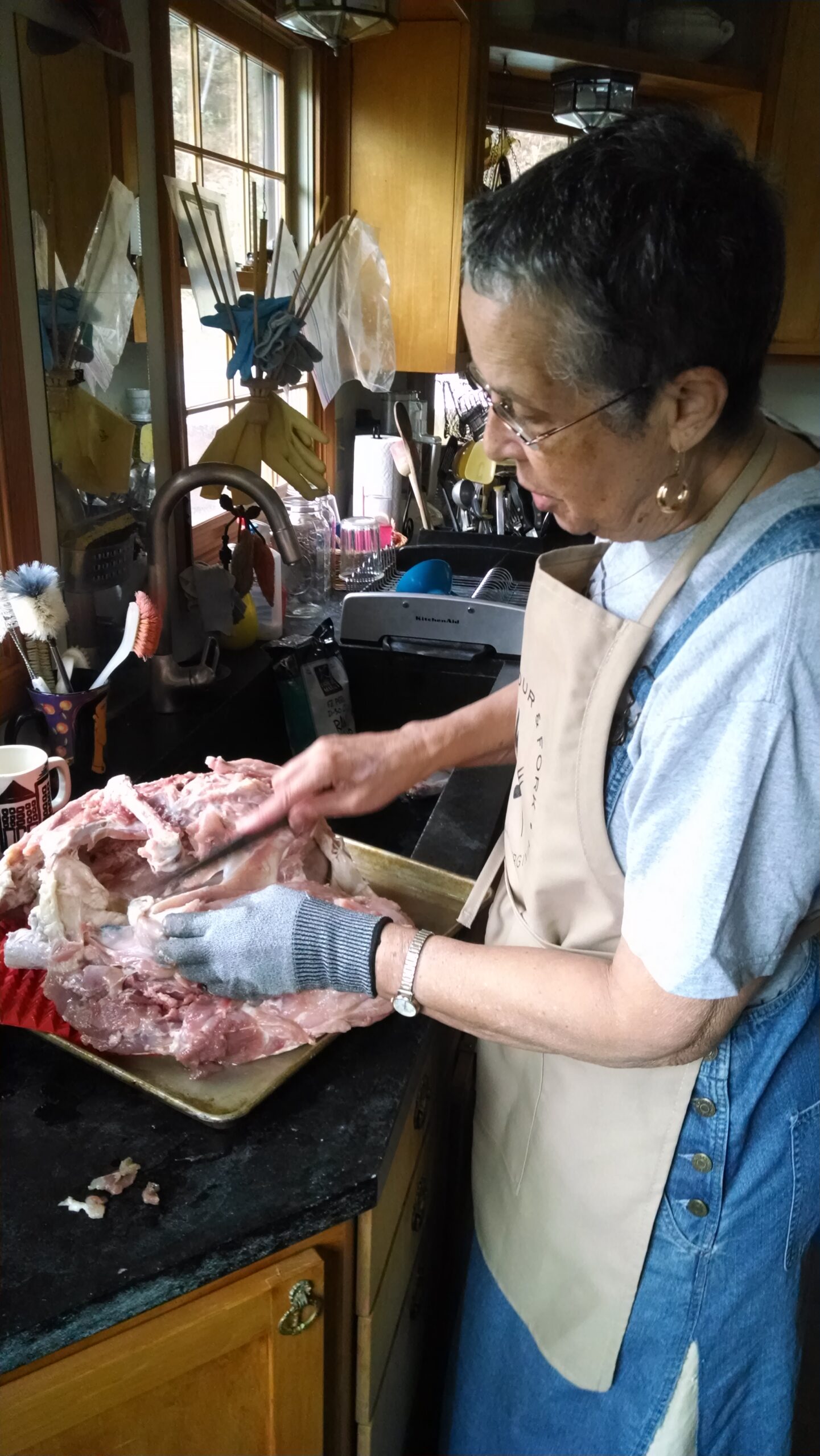
In which I debone a turkey!
Why would someone debone a turkey? The answer is “it’s all Julia’s fault”! Years and years ago on the farm in South Dakota I watched Julia Child debone a duck on one of her PBS shows. And her reasons for doing so seemed so sensible to me I was immediately convinced. However, right at that moment in my life I didn’t have a duck.
BUT I did have a turkey. Thus began the long tradition in my kitchen of deboning the Thanksgiving bird.
What are the advantages of deboning a turkey? Number one: I want all the bones for creating the 3-4 gallons of stock I want for making a rich gravy; the neck and gizzard that come in the innards package just aren’t enough. With all of the keel and rib bones, the backbone, the thigh bones, and the wing tips there is enough to get a rich stock.
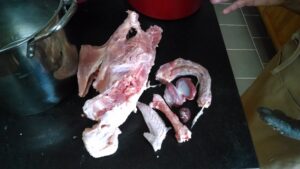
Number two: Carving a bird without all those bones getting in the way is soooo easy! You can carve right across the roast bird.
Number three: If instead of trussing up the bird into its more traditional turkey-ish shape you decide to roast your bird spatchcocked the roasting time is really reduced.
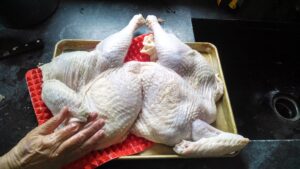
Where do you start in this admittedly messy process? I sharpen my small boning knife for getting into the joints. I work on a cookie sheet to keep the juices from running onto the counter.
If you follow Julia’s method you begin at the back end slowly turning the whole bird inside out, and I have done that a few times. It takes a while but makes a pretty impressive presentation.
Mostly I am a lazy Thanksgiving person; I want everything to be as simple as possible and able to be prepped days or even weeks in advance when possible. So a deboned bird tied in shape or spatchcocked bird is about my speed. Every cookery magazine in the last several years has announced spatchcocking as if it were a new clever thing invented by some New Age chef. All it means is splitting the bird up the back on either side of the backbone and flattening the carcass and cooks have been doing it for centuries. I start there at the backbone. That backbone is a perfect piece for the stock pot.
Then I press the bird open and begin on one side to cut out the bones. There’s no need for the work to look pretty; the first time I did it was pretty messy, and you can see in the pictures it looks messy no matter how many times I’ve done it.
Next, I flatten the leg thigh part and remove the thigh bone first. Then running my knife along the ribs and keel bone I release the breast meat all the way to the cartilage of the keel. Here I go carefully as I don’t want to cut the skin over the breast.
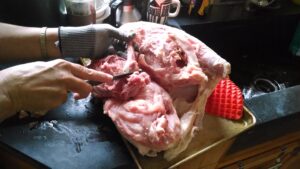
So I leave that for the final step and switch to start on the other side with the thigh bone, ribs and breast meat down to the keel cartilage. At that point the whole breastbone is carefully cut away from the cartilage. And if I do cut through the skin – I just swear loudly and don’t worry about it. A nicely roasted bird will always look super no matter what.
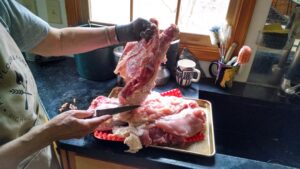
I season the interior side of the bird well with salt and pepper, and garlic powder or roasted garlic if I have it. There are so many other flavors a person can add, rosemary, thyme, lemon but I tend to stay simple. If I intend tying the bird into a turkey shape now, I fold the back together and I use an old large eye needle – especially saved for this job in my utility drawer – and string to sew the bird back up.
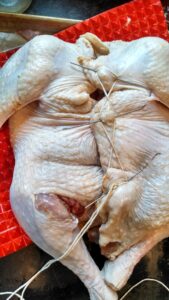
Once tied, I wipe the bird well with paper towel and rub it well with butter, and since I’m working two days ahead, I wrap it and stash it in the fridge till the Day!
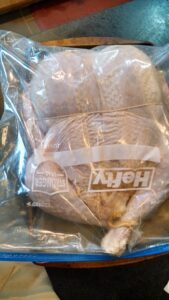
Now I have a full day to make gravy stock from all the trimmings. Following my Daddy Robert’s tradition, I have already made cornbread on Monday to get firm and dry to be ready to make the dressing on Wed afternoon.
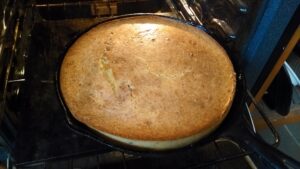
There are probably as many temperatures and crisping method for a Thanksgiving turkey as there are cooks. I’m in the preheated 400-degree oven camp; put in the bird, and in a half hour or so I drape some foil on top and drop the temp to 350 degrees. I keep dripping the bird with lots of butter during the roasting. Can we have too much butter? No. And all those brown crusty pan juices will help make the gravy even more tasty. I do use an instant read thermometer to check for the magic 165 degree of doneness. With no bones and especially when cooked spatchcocked I have learned to watch roasting times carefully.
HAPPY THANKSGIVING!
Note: One time I raised some ducks and was able to use Julia’s method on a duck! Also, this method works well with chicken too!
